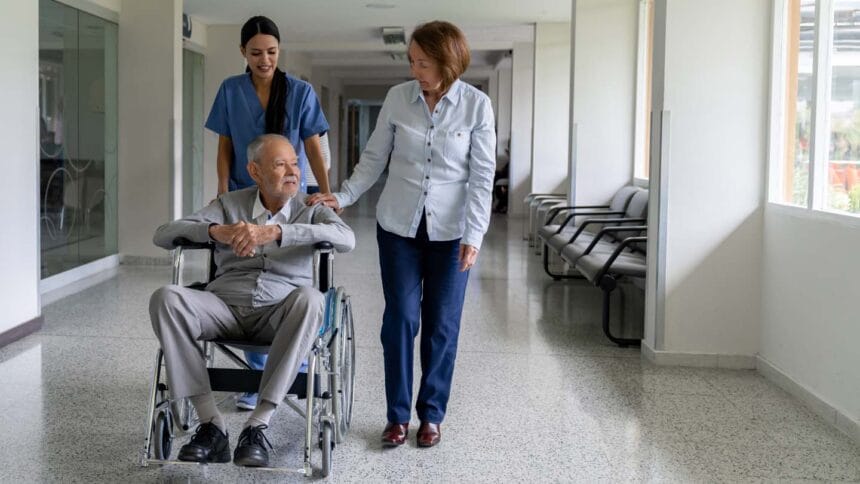
The hospital backlogs of elderly Medicare and Medicaid patients that spiked sharply in 2020 are likely here to stay unless innovative solutions are implemented in post-acute care and other rehabilitation facilities, two sector experts said Tuesday.
A combination of extreme staffing challenges and heightened physical and behavioral health acuity in an aging population have created a “perfect storm” for hospitals and post-acute care facilities, said Anne Tumlinson, founder and CEO of ATI Advisory, at an online presentation hosted by her consulting firm.
Hospitals, post-acute care providers, state governments and other providers all will need to collaborate to satisfactorily address the complex problems, said co-presenter Fred Bentley, managing director at ATI Advisory
Thousands of patients are increasingly being forced to wait in hospitals for days or weeks without a suitable placement facility downstream.
“This is a challenge that is hitting all hospitals in virtually all communities,” Bentley emphasized.
He noted that backlog lengths across the US had been declining steadily for decades before the onset of the COVID-19 pandemic. And while hospital length-of-stay numbers have declined somewhat since their peak in early 2022, there is no sign of the backlogs going away without innovating interventions.
“You could look at this data and say … we’re just going to steadily work our way out of it,” he said. “It’s not going to be quite as intense for quite as many hospitals, but there is ample, ample evidence that this is not a crisis that’s going away any time soon.”
Unusual challenges, innovative solutions
Tumlinson highlighted skilled nursing providers’ staffing problems as a major root cause of the backlog issue.
“What we are seeing is … by far the most severe and most challenging workforce shortage that I have ever seen in my career,” she said.
Tumlinson referenced an early 2024 “State of the Sector” survey from the American Health Care Association in which 72% of nursing home executives said their staffing levels were still at pre-pandemic levels while 46% said they were limiting new admissions.
Those numbers are borne out in Medicare Fee For Service data from 2023, according to the ATI Advisory experts. In Q2 of that year, only 18% of hospital discharges went to skilled nursing facilities, but 43% of patients who had to wait 30 more more days for their discharge were placed in SNFs. Patients discharged to SNFs had the longest wait times of any setting on average.
Those problems are only worsened by delays with patients’ insurance, such as Medicaid determinations and Medicare Advantage prior authorizations from those payers.
Bentley said SNFs can help themselves by deepening partnerships with post-acute facilities and primary care providers to smooth care transitions. He also noted that some hospitals have been able to provide staffing assistance and training to SNFs in order to better equip them to handle today’s increasingly high-acuity patients.
SNFs, meanwhile, should look to better prepare themselves for high-complexity patients by learning to specialize in areas such as wound care, memory care and even dialysis, he suggested.
Providers across the care continuum also should also be looking holistically at how to avoid hospitalizations in the first place, Bentley emphasized.
“We’ve been so focused on the discharge process,” he told attendees, “and the fact is, this is now a clarion call for the health system to really focus on preventing hospitalizations to begin with.”
He also called on state governments to implement new laws and regulatory policies to financially incentivize SNFs to take on the higher acuity patients that are most likely to be forced to stay in hospitals for extended periods.




